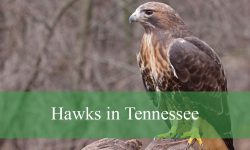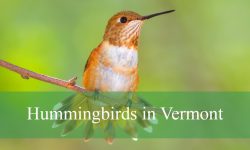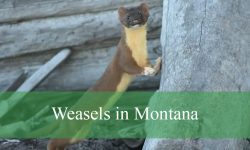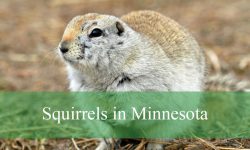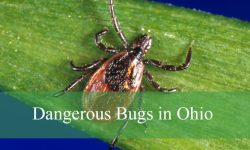California is home to an incredible diversity of wildlife, and one of the most fascinating groups to explore is the wide variety of birds in California. From vibrant hummingbirds to powerful hawks, the state’s unique mix of coastlines, mountains, deserts, and forests supports a remarkable range of birdlife. Exploring the many types of birds in California reveals just how rich and varied the avian population is throughout the state.
This guide showcases 50 of the most common and captivating types of birds in California, complete with pictures and identification details. Each species profile includes useful information on behavior, appearance, and natural habitat to help with spotting and recognizing these birds in the wild or in your backyard. These descriptions aim to make birdwatching more accessible and enjoyable for anyone interested in learning about nature.
Observing birds in California offers a deeper appreciation for the environment and the ecosystems that support them. From bustling urban areas to remote trails, birds add color, movement, and song to every corner of the Golden State. Dive into this list and discover the incredible feathered residents that make California such a vibrant place for bird lovers.
Different Types of Birds in California
California Quail (Callipepla californica)
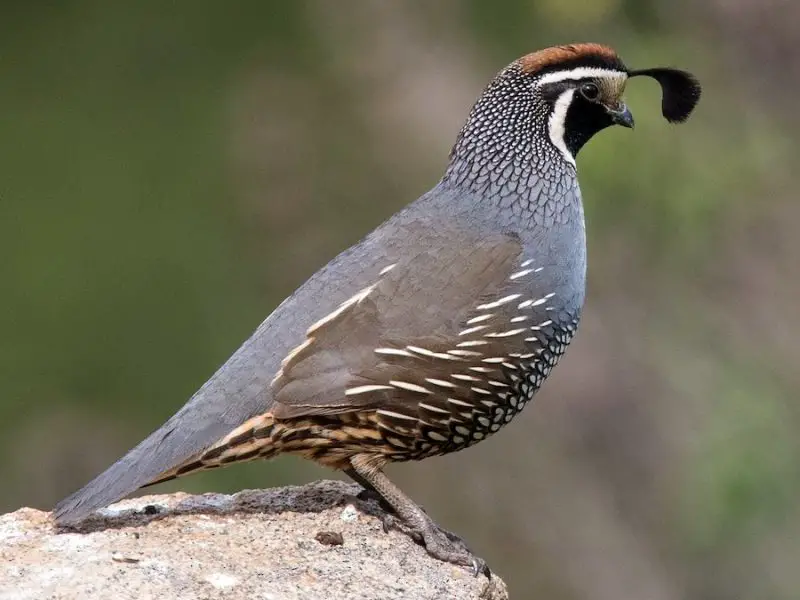
The California Quail is a small, plump ground-dwelling bird easily recognized by the curved black plume on its head, which is actually a cluster of six feathers. Males are more colorful, with a dark brown cap, black throat outlined in white, and scaly gray underparts, while females are more muted in tone. These birds have a round body and a short tail, giving them a compact appearance.
This quail species is known for its sociable nature, often found in coveys of up to 20 individuals. They feed mostly on seeds, leaves, and small insects, foraging on the ground and communicating with a distinctive “Chi-ca-go!” call. During the breeding season, males perform courtship displays by puffing out their chests and calling to attract mates.
California Quail are common in chaparral, coastal sage scrub, open woodlands, and suburban gardens throughout the state. They are especially prevalent in foothills and areas with dense brush that provide good cover. Native to the West Coast, they are the official state bird of California and are well adapted to dry, Mediterranean-like climates.
Anna’s Hummingbird (Calypte anna)
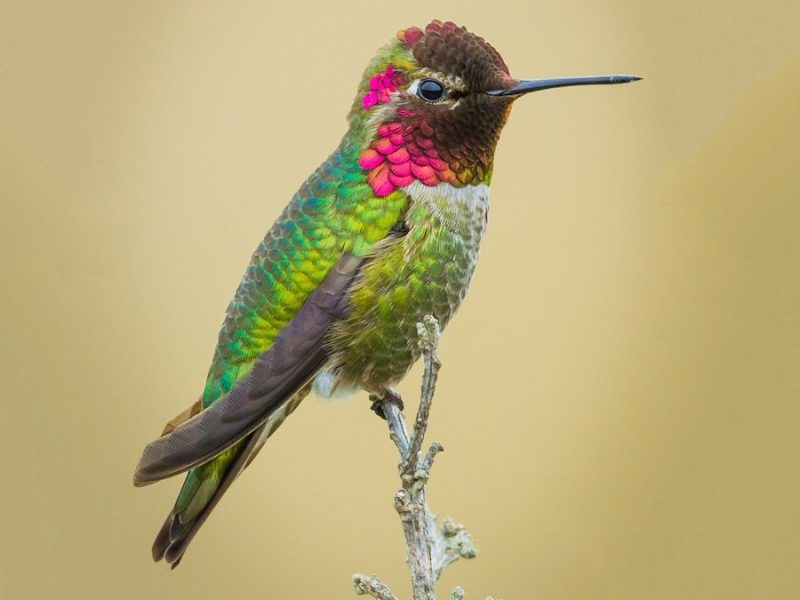
Anna’s Hummingbird is a medium-sized hummingbird species with iridescent emerald green feathers and a striking rose-pink gorget in males, which extends to the crown. Females are less vibrant but still possess green upperparts and pale underparts with a spot of red or pink on the throat. Their straight black bills and rapid wing beats make them agile fliers.
These hummingbirds are active and territorial, especially around nectar sources such as flowering plants or hummingbird feeders. Males perform dramatic aerial dives and produce a loud burst of sound with their tail feathers to impress females during courtship. They feed on flower nectar, insects, and spiders for protein.
Anna’s Hummingbirds are year-round residents along the California coast and urban areas, especially where flowering gardens are abundant. Unlike most North American hummingbirds, they do not migrate and can be seen even during the winter months. Their ability to adapt to human presence makes them one of the most common hummingbirds in California.
House Finch (Haemorhous mexicanus)
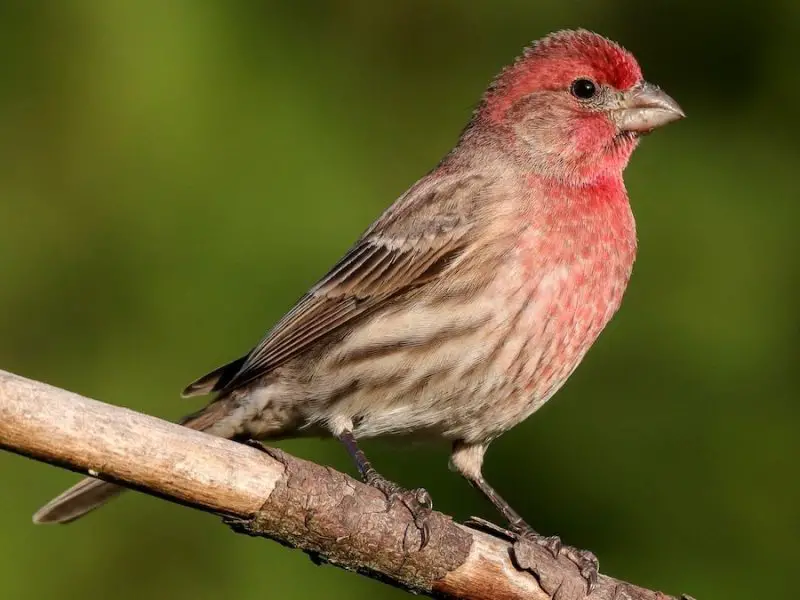
The House Finch is a small songbird with a conical beak and a relatively long, notched tail. Males are easily identified by their bright red heads and chests, while females are streaky brown with no red coloration. Their cheerful warbling song is a familiar sound in backyards and urban settings.
These birds are highly adaptable and often nest in man-made structures like vents, eaves, or hanging planters. They primarily eat seeds, fruits, and occasionally insects. House Finches are social birds, forming flocks outside the breeding season and often gathering in large numbers at feeders.
Originally native to the Southwest, House Finches have spread across much of North America. In California, they thrive in urban, suburban, and agricultural landscapes. They are among the most common feeder birds in the state and can be found year-round in both coastal and inland areas.
American Robin (Turdus migratorius)
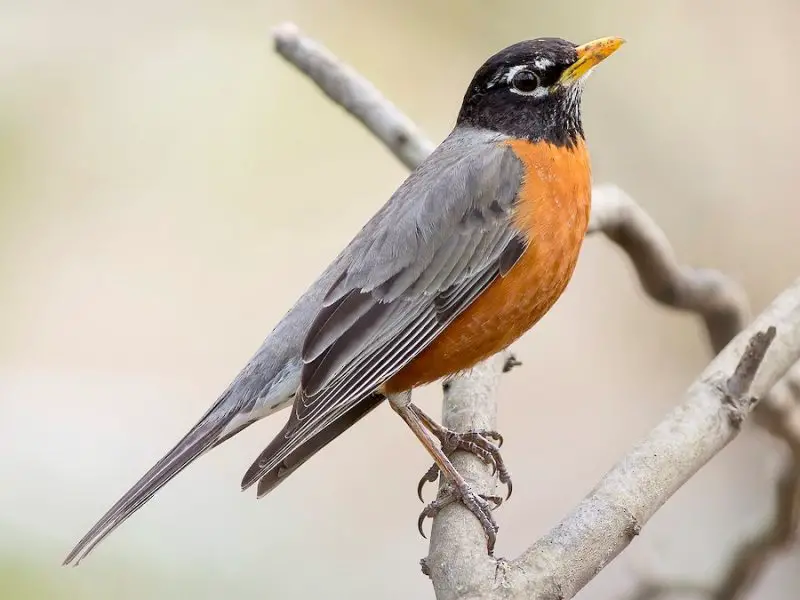
The American Robin is a familiar sight with its gray upperparts, orange-red breast, and bold white eye ring. It has a slender yellow bill and a distinctive upright stance. Juveniles are speckled with dark markings on the chest and back, which fade as they mature.
Robins are best known for their melodious song, often heard at dawn and dusk. They forage mostly on lawns, pulling up earthworms and insects, and also feed on berries, especially in winter. During the breeding season, they construct cup-shaped nests in trees, shrubs, or ledges using mud and grass.
In California, American Robins are year-round residents in many regions, including woodlands, parks, gardens, and urban areas. Their populations may increase during migration seasons when northern birds move through the state. They are among the most recognizable and widespread songbirds across North America.
California Scrub-Jay (Aphelocoma californica)
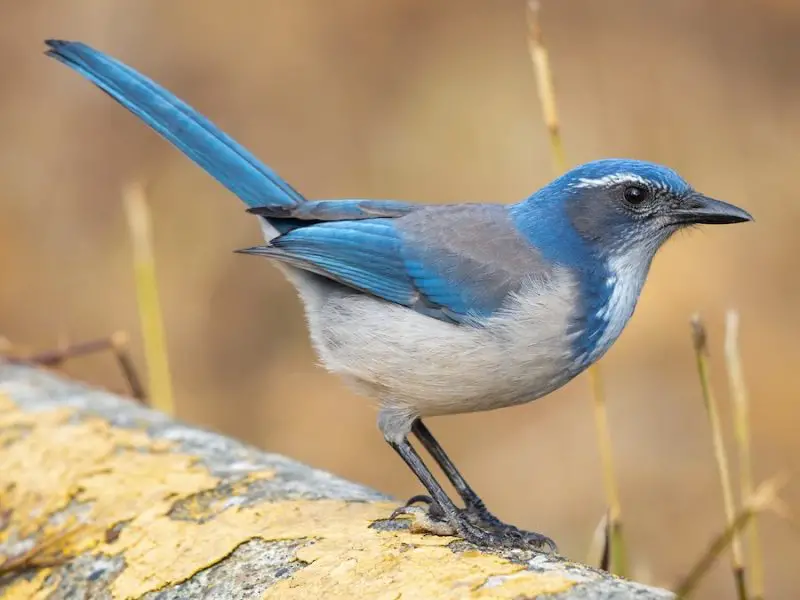
The California Scrub-Jay is a bold, medium-sized songbird with vivid blue upperparts, a white throat, and gray underparts. Its head and tail are bright blue, and it has a noticeable blue necklace across the chest. Unlike some jays, it lacks a crest and has a more slender profile.
These birds are intelligent and curious, often seen hopping through shrubs or flying between trees with strong, purposeful wingbeats. They are omnivorous, eating acorns, seeds, insects, small animals, and even nestlings. Known for their memory, they often cache food for later use and remember hundreds of hiding spots.
In California, the Scrub-Jay is found in oak woodlands, chaparral, suburban neighborhoods, and parks. It is common in coastal and foothill regions but generally avoids dense forests. Their loud calls and assertive behavior make them one of the most noticeable and entertaining backyard birds in the state.
Dark-eyed Junco (Junco hyemalis)

The Dark-eyed Junco is a small, sparrow-like bird with a round head, short pink bill, and long tail with white outer feathers. In California, the most common form is the “Oregon” variety, which has a dark hood, chestnut-brown back, and pale underparts. Their crisp color contrast makes them easy to identify, especially when foraging on the ground.
Juncos are primarily ground feeders, hopping along leaf litter in search of seeds and insects. Their high-pitched “tick” calls and rapid, trilling songs are often heard in forests and gardens during the colder months. They are active and social in flocks during winter but become more territorial in the breeding season.
In California, Dark-eyed Juncos are widespread, especially in mountain forests, oak woodlands, and residential areas with tree cover. They are more common at higher elevations during the summer and move to lower elevations in winter. Their adaptability and charming behavior make them frequent visitors to backyard feeders.
Western Bluebird (Sialia mexicana)

The Western Bluebird is a small, plump thrush with a vivid blue head and back, rusty orange chest, and gray belly. Females are paler, with more subdued blue and rusty tones. Their gentle appearance and soft warbling calls make them a favorite among birdwatchers.
These birds feed on insects and berries, often seen perched on fences or branches as they scan the ground for prey. During the breeding season, they nest in natural cavities or nest boxes and are known for their cooperative breeding behavior, where young from previous broods help feed new chicks.
Western Bluebirds are found throughout much of California, especially in open woodlands, meadows, and parklands with scattered trees. They are year-round residents in many areas but may move to lower elevations in winter. Conservation efforts, including nest box programs, have helped support their populations in developed regions.
Mourning Dove (Zenaida macroura)
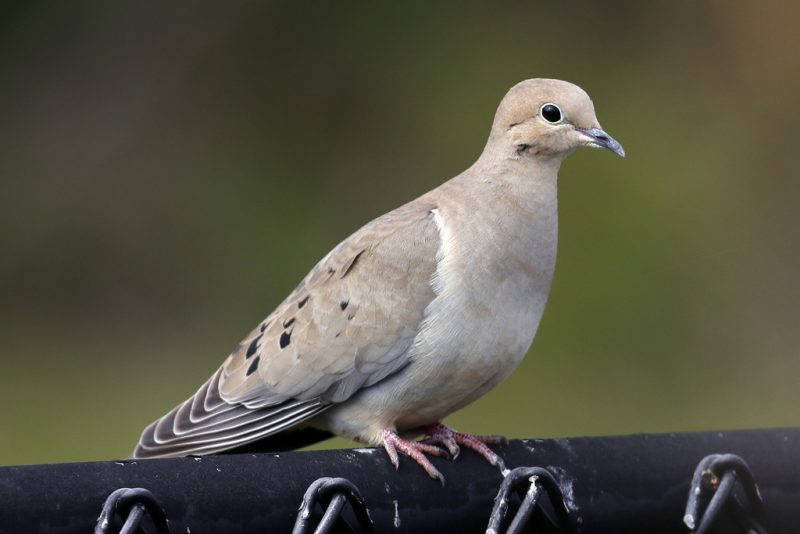
The Mourning Dove is a slender, medium-sized dove with a small head, long pointed tail, and soft gray-brown plumage. Its distinctive black spots on the wings and delicate pinkish breast help distinguish it from other doves. Its name comes from its plaintive, mournful cooing call.
These doves are fast and agile fliers, often taking off with a sharp whistling sound made by their wings. They feed primarily on seeds, foraging on the ground in open fields, roadsides, and backyards. Mourning Doves are monogamous and typically raise several broods each year in simple twig nests.
In California, Mourning Doves are widespread and abundant in almost all habitats, from deserts and grasslands to suburban areas and farmlands. They are year-round residents and often seen perching on telephone wires or sunning themselves in open areas. Their gentle nature and soft song make them a peaceful presence in many landscapes.
Oak Titmouse (Baeolophus inornatus)
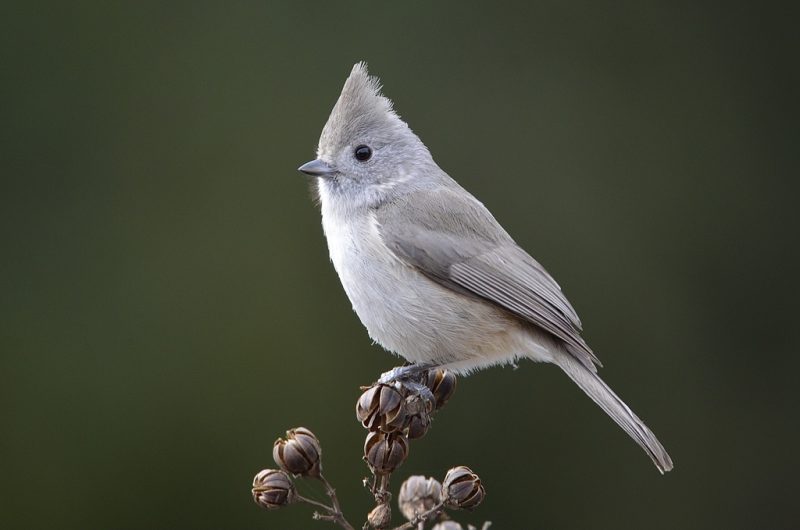
The Oak Titmouse is a small, plain gray bird with a short crest, dark eyes, and a stubby bill. Unlike its more colorful relatives, this bird is subtly marked, blending well with the bark of oak trees. Its perky crest gives it a curious and alert appearance.
Titmice are active and vocal, often moving in mixed flocks through oak woodlands. Their call is a rapid, scratchy “pit-pit-pit” and they often sing a series of buzzy notes. They feed on insects, seeds, and acorns, frequently hanging upside-down while foraging among branches and twigs.
This species is found primarily in California’s interior oak and mixed woodlands, especially in the Coast Ranges and Sierra Nevada foothills. Oak Titmice are non-migratory and maintain year-round territories. They are cavity nesters and will readily use nest boxes placed in suitable habitats.
Northern Mockingbird (Mimus polyglottos)
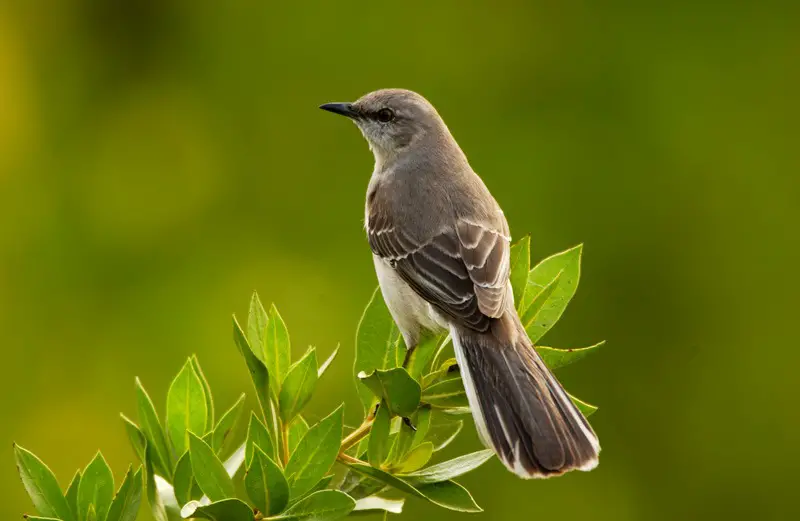
The Northern Mockingbird is a medium-sized songbird with gray upperparts, pale underparts, and long legs and tail. Its white wing patches are highly visible in flight, and its tail often fans out dramatically. Though visually modest, its vocal abilities are unmatched among backyard birds.
Mockingbirds are famous for their mimicry, able to imitate the calls of other birds, mechanical sounds, and even human whistles. Males sing constantly during the breeding season, often from exposed perches. They are also fiercely territorial and will chase off intruders with determination and agility.
In California, Northern Mockingbirds thrive in urban, suburban, and open habitats with shrubs or small trees. They are especially common in residential neighborhoods and agricultural areas. Their adaptability, bold personality, and impressive singing make them a memorable part of California’s avian landscape.
Bushtit (Psaltriparus minimus)

The Bushtit is a tiny, round-bodied songbird with a long tail and short, stubby bill. It has soft gray or brownish-gray plumage, with subtle variations depending on region and sex—females typically show a pale yellow eye, while males have dark eyes. Their constant motion and high-pitched contact calls make them easy to detect in foliage despite their small size.
Bushtits are highly social and travel in active, chatty flocks of up to 40 individuals. They flit rapidly through trees and shrubs in search of insects, spiders, and small caterpillars. During the breeding season, they build remarkable hanging nests made of moss, spider silk, and plant fibers, often hidden deep within shrubs or tree canopies.
In California, Bushtits are widespread in a variety of habitats, including oak woodlands, chaparral, suburbs, and parks. They prefer areas with dense vegetation, where they can forage collectively and remain sheltered from predators. Their cooperative flock behavior and tiny size make them a favorite among birdwatchers.
Spotted Towhee (Pipilo maculatus)
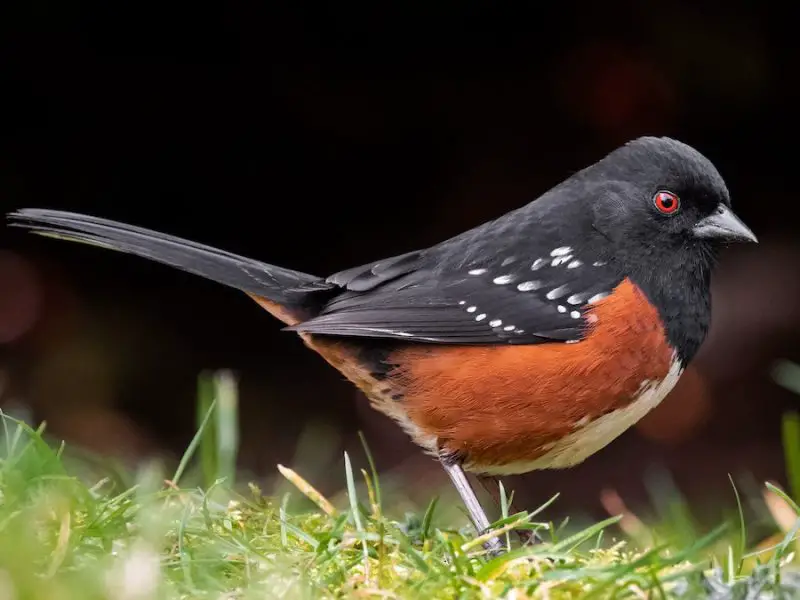
The Spotted Towhee is a striking, large sparrow with a jet-black head, back, and tail in males, contrasted by rufous flanks, white belly, and bold white spots on the wings and back. Females have the same patterning but with dark brown in place of black. Their red eyes add a dramatic touch to their appearance.
These birds are ground dwellers, often seen scratching through leaf litter in search of insects, seeds, and berries. Their behavior is distinctive—they hop, scratch, then pause and repeat, often hidden under dense shrubs. The Spotted Towhee has a sharp “chewink” call and a buzzy trilled song heard during spring and summer.
Spotted Towhees are common across California in dry brushlands, forest edges, suburban gardens, and chaparral. They prefer habitats with thick understory for cover and nesting. Though shy and often hidden, their vivid coloring and calls reveal their presence to attentive observers.
Cedar Waxwing (Bombycilla cedrorum)
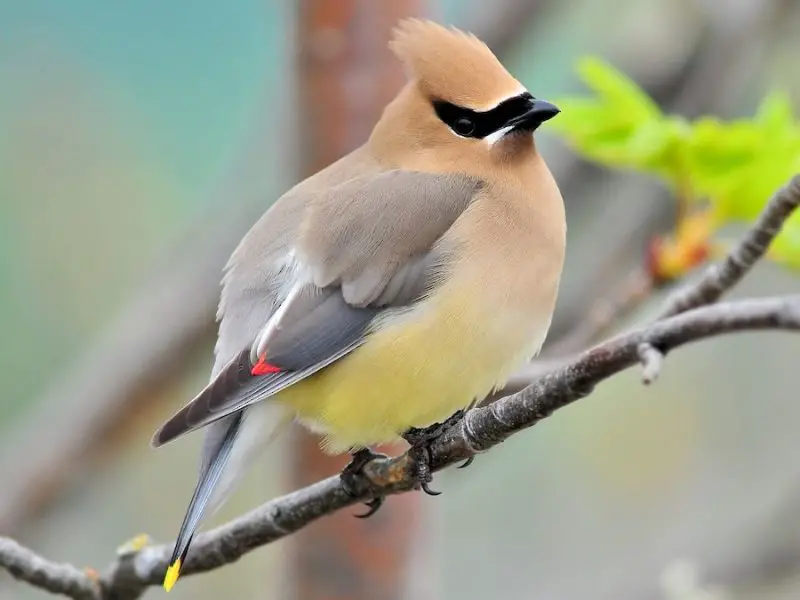
The Cedar Waxwing is a sleek, medium-sized songbird known for its silky plumage, pale brown and gray coloring, black mask, and bright yellow-tipped tail. The bird’s name comes from the small red, waxy tips on its wing feathers, which are most prominent in adults. It has a soft, high-pitched call that sounds like a hiss.
Waxwings are social and often travel in flocks, especially in fall and winter. They are primarily frugivores, feeding on berries from trees and shrubs, but will also catch flying insects in midair. Their gentle nature and striking looks make them popular with birders and photographers alike.
In California, Cedar Waxwings are found throughout the state, especially during winter when they descend in large numbers to feast on fruiting trees and bushes. They are frequent visitors in parks, orchards, and neighborhoods where berry-producing plants are abundant. Their nomadic habits make their appearances somewhat unpredictable but always memorable.
American Crow (Corvus brachyrhynchos)
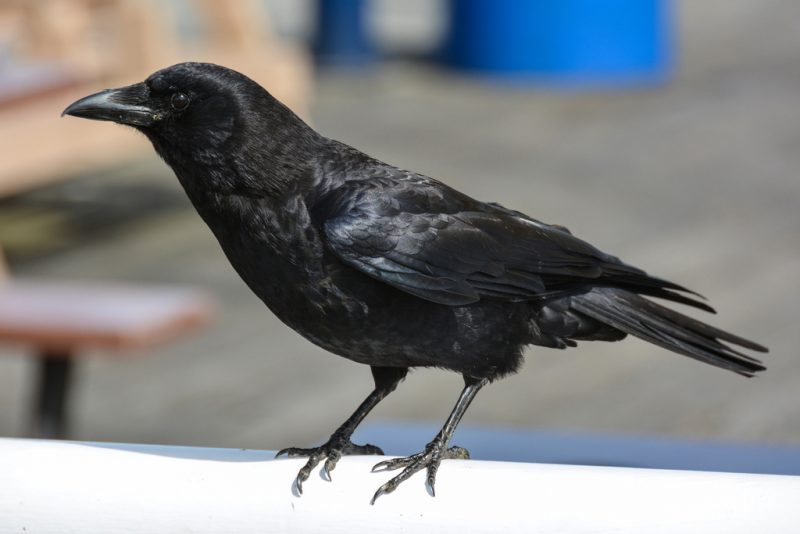
The American Crow is a large, all-black bird with a stout bill, broad wings, and a loud, cawing voice. Its glossy feathers can show hints of purple or green in the right light. Highly intelligent and social, crows are known for their problem-solving skills and adaptability.
Crows are omnivores, feeding on everything from insects and small animals to seeds, garbage, and carrion. They are resourceful and often observed using tools or working together to access food. American Crows are vocal birds with a varied range of calls and are often seen mobbing hawks and other predators.
In California, American Crows are widespread and common in nearly every habitat, including urban areas, farmland, forests, and coastal regions. They are permanent residents and often gather in large communal roosts during the non-breeding season. Their intelligence and versatility allow them to thrive in close proximity to humans.
Red-winged Blackbird (Agelaius phoeniceus)
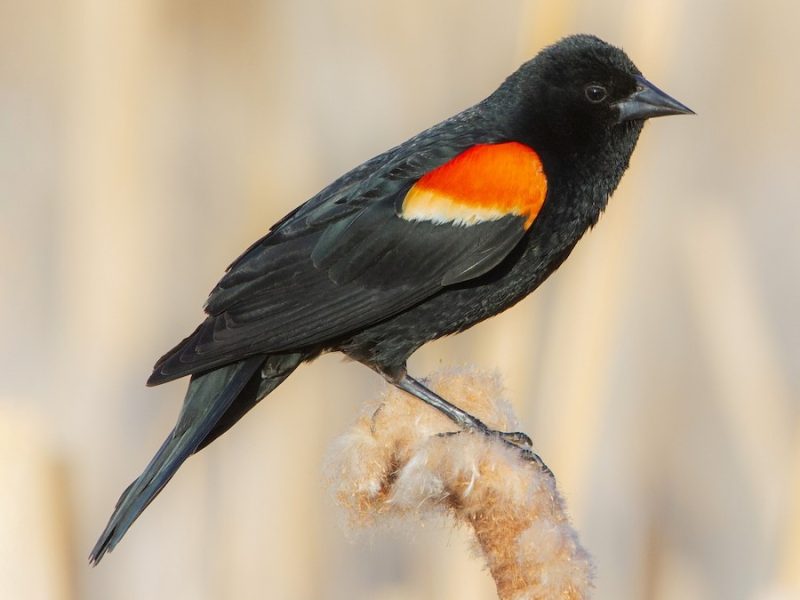
The Red-winged Blackbird is easily recognized by the bright red and yellow shoulder patches, or epaulets, on males. The rest of the male’s body is glossy black, while females are streaky brown and resemble large sparrows. Males are often seen perched prominently while singing their harsh, musical “conk-a-ree” song.
These birds are highly territorial during the breeding season, with males defending marshy areas and attracting multiple mates. Red-winged Blackbirds feed on seeds and insects, foraging in wetlands, grasslands, and crop fields. Outside of breeding season, they gather in enormous flocks with other blackbirds and starlings.
In California, they are abundant year-round, especially in freshwater marshes, agricultural lands, and grassy fields. Their preference for wet habitats makes them common in the Central Valley and along riparian corridors. Their loud calls and flashy plumage make them one of the most conspicuous birds in the landscape.
Lesser Goldfinch (Spinus psaltria)
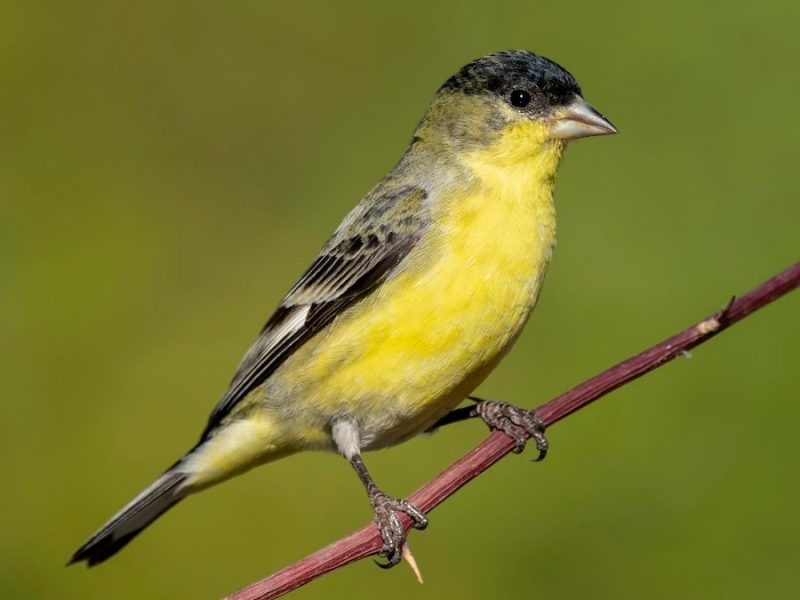
The Lesser Goldfinch is a small songbird with a black cap, yellow underparts, and black wings marked by white patches. Males in California typically have a greenish back, while females are duller yellow-green with more subdued markings. Their cheerful appearance is matched by a high-pitched, twittering song often delivered in flight.
These active birds feed on seeds, especially from sunflowers, thistles, and dandelions. They are agile foragers, hanging upside down from stems and branches to reach food. Lesser Goldfinches often join mixed flocks with other finches and warblers, especially during migration and winter months.
In California, they are abundant year-round in a variety of habitats including gardens, riparian woodlands, foothills, and suburban areas. They prefer open spaces with weedy vegetation and shrubs. Backyard feeders with nyjer or sunflower seeds are a great way to attract these lively little birds.
Black-headed Grosbeak (Pheucticus melanocephalus)
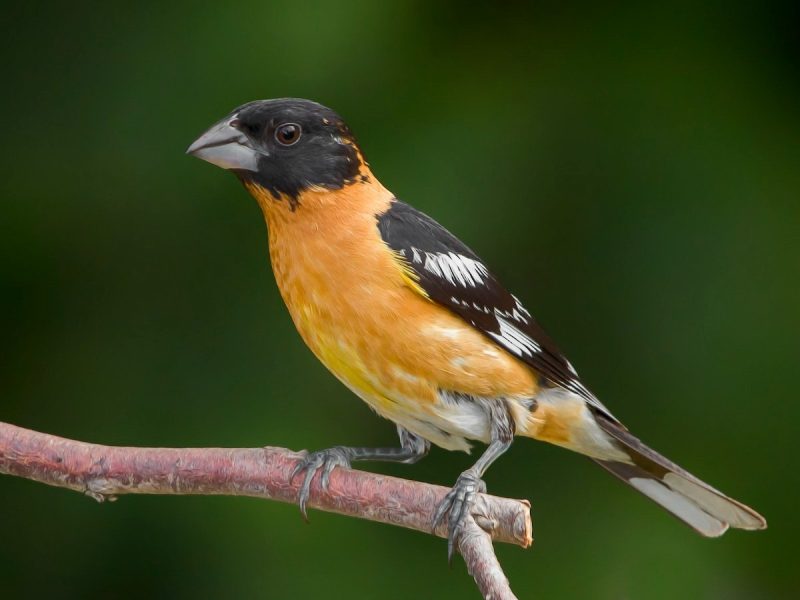
The Black-headed Grosbeak is a striking, medium-sized songbird with a thick, conical bill perfect for cracking seeds. Males display bold orange underparts, black heads and wings with white patches, while females are more brownish with streaked sides and a white eyebrow. Their rich, melodic song resembles that of a robin but is more fluid and complex.
These birds are omnivores, feeding on seeds, berries, insects, and even monarch butterflies, whose toxins they can tolerate. During summer, they are commonly seen hopping through tree branches or visiting feeders. Both males and females share nesting duties and are attentive parents.
In California, Black-headed Grosbeaks are common summer breeders in woodlands, riparian corridors, and suburban gardens, especially where trees like sycamore or oak are present. They migrate to Mexico for the winter but are widespread and vocal throughout the state during breeding season.
Yellow-billed Magpie (Pica nuttalli)

The Yellow-billed Magpie is a large, long-tailed bird with bold black-and-white plumage and a bright yellow bill and eye skin. It is visually similar to the Black-billed Magpie found in other regions but is uniquely native to California. Its flashy appearance and loud calls make it easy to notice in open habitats.
Social and intelligent, Yellow-billed Magpies often gather in flocks and exhibit complex social behaviors. They forage on the ground for insects, small animals, seeds, and carrion, and will cache food for later use. Their nests are large, domed structures built high in trees.
These magpies are found only in California’s Central Valley and surrounding oak savannas and grasslands. They prefer areas with scattered trees and open ground. Due to their restricted range and sensitivity to habitat change and disease, conservation of suitable landscapes is important for their survival.
Mountain Chickadee (Poecile gambeli)

The Mountain Chickadee is a small, acrobatic bird with a black cap and bib, white cheeks, and a distinctive white eyebrow that sets it apart from other chickadees. Its soft gray body and energetic movements give it a charming, approachable presence in pine and fir forests.
This species feeds on insects, seeds, and spiders, often flitting through coniferous trees and hanging from needles and twigs. They store food for winter and are known for remembering hundreds of hiding spots. Their raspy, descending “chick-a-dee-dee” call and cheerful song are commonly heard in mountain woodlands.
Mountain Chickadees are year-round residents in California’s higher elevations, including the Sierra Nevada and coastal ranges. They nest in tree cavities or nest boxes and readily visit feeders in forested mountain communities. Hardy and adaptable, they remain active even in snowy winter conditions.
Chestnut-backed Chickadee (Poecile rufescens)

The Chestnut-backed Chickadee is a small, round-bodied bird with a black cap and bib, white cheeks, and rich chestnut coloring on its back and sides. Its fluffy appearance and quick movements make it a favorite in coastal forests. The amount of chestnut can vary by region, with birds in coastal California showing the deepest hues.
These chickadees are agile foragers, feeding on insects, spiders, and seeds by darting through dense branches and foliage. Their calls are fast and buzzy, often mixed with high-pitched notes. Like other chickadees, they cache food and return to it later using excellent spatial memory.
In California, Chestnut-backed Chickadees are most common along the coast and in damp forests of redwood and Douglas fir. They prefer cool, moist habitats and are frequent visitors to feeders, especially those offering suet and sunflower seeds. Their presence adds lively energy to forested environments year-round.
Cooper’s Hawk (Accipiter cooperii)
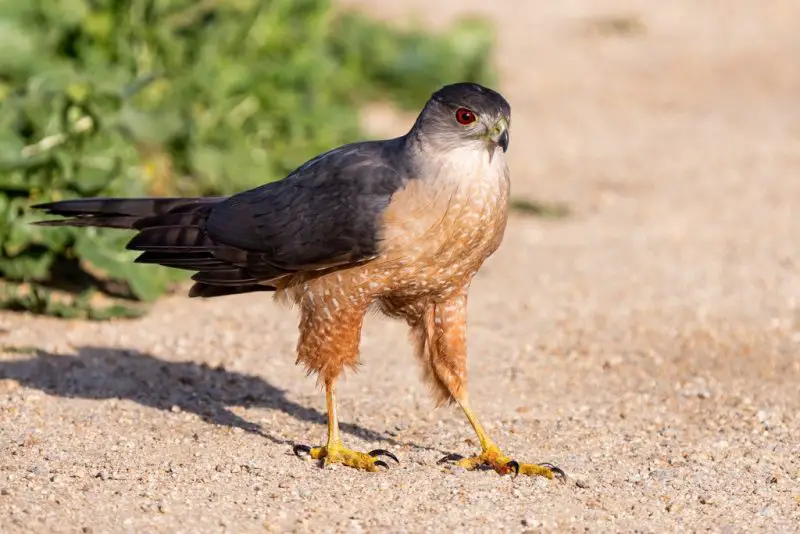
Cooper’s Hawk is a medium-sized raptor with broad, rounded wings and a long, banded tail that ends in a rounded tip. Adults have a blue-gray back, red-orange eyes, and finely barred reddish underparts, while juveniles are brown above with streaked underparts. Their agile flight and fierce hunting behavior make them a powerful presence in wooded habitats.
This hawk specializes in hunting birds and small mammals, often ambushing prey with swift, low glides through dense trees or shrubs. They are agile and persistent, capable of navigating tight spaces while chasing prey. Their nesting season is marked by sharp calls and territorial flights, especially around wooded suburban areas.
In California, Cooper’s Hawks are found year-round in forests, riparian corridors, parks, and suburban neighborhoods. They are increasingly adapting to urban environments where bird feeders attract their prey. Though elusive, they can often be spotted perched quietly or dashing through trees with focused intensity.
Sharp-shinned Hawk (Accipiter striatus)
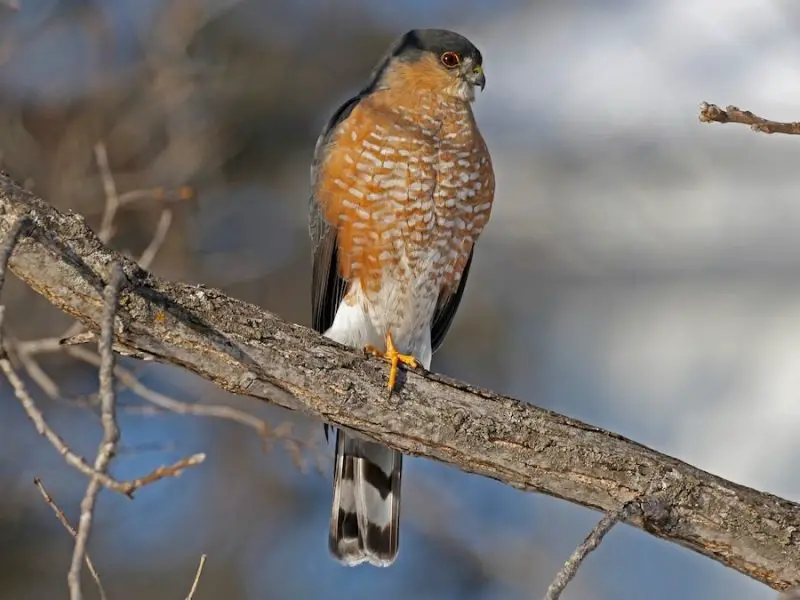
The Sharp-shinned Hawk is the smallest accipiter in North America, with short, rounded wings and a square-tipped tail. Adults are bluish-gray above with reddish barring below, while juveniles are brown with streaked underparts. These hawks resemble a smaller version of the Cooper’s Hawk but with more compact proportions and a narrower head.
Sharp-shinned Hawks are swift, agile hunters that prey mostly on small birds. They often ambush from cover or pursue their target with quick, twisting flights. During migration, they are a familiar sight at raptor watch sites, gliding on thermals or darting along forest edges.
In California, they breed in mountainous and forested areas but are more commonly seen in the lowlands during migration and winter. They visit suburban gardens in search of feeder birds but are secretive and tend to stay close to cover. Their presence may go unnoticed until a sudden burst of wings signals an ambush.
Red-shouldered Hawk (Buteo lineatus)

The Red-shouldered Hawk is a medium-sized buteo with rich rufous coloring on the chest and shoulders, black-and-white checkered wings, and a boldly banded tail. Its loud, distinctive “kee-aah” call is often heard before the bird is seen. Compared to other hawks, it is more vocal and frequently active in wooded settings.
This hawk primarily feeds on small mammals, amphibians, reptiles, and occasionally birds, often hunting from a perch before swooping down on its prey. Red-shouldered Hawks are known for their strong territorial defense, especially during nesting season when they may dive at intruders.
In California, they are common in riparian woodlands, oak groves, and suburban parks with tall trees and nearby water. They are year-round residents and can be observed soaring above tree canopies or perched in open view. Their preference for forested areas sets them apart from other hawk species.
Pine Siskin (Spinus pinus)
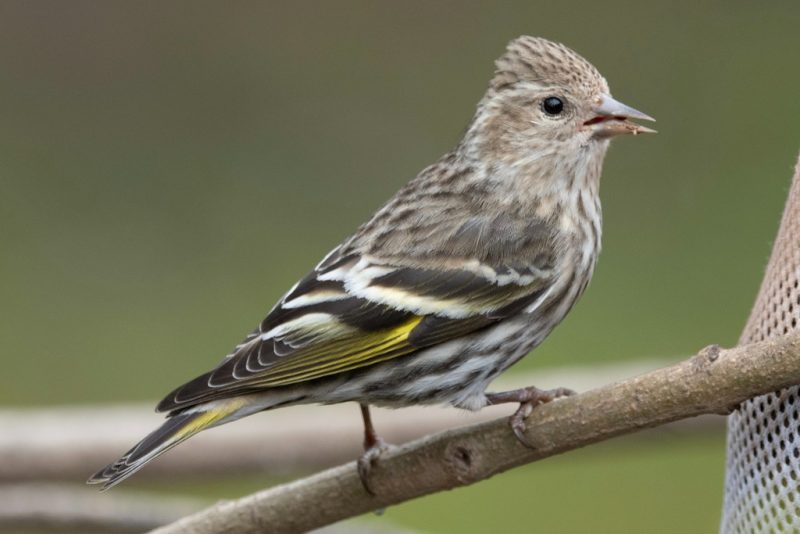
The Pine Siskin is a small, streaky finch with a sharp, pointed bill and touches of yellow in the wings and tail. It is often confused with sparrows but has a slimmer profile and a distinctive upturned call. Their plumage is mostly brown and heavily streaked, offering camouflage among pine branches.
Pine Siskins feed primarily on seeds from conifers, alders, and birches, as well as from thistles and sunflowers. They are highly social birds that often gather in noisy flocks, especially during irruptive winters when food shortages drive them farther south. At feeders, they are fast-moving and competitive.
In California, Pine Siskins are irregular but widespread winter visitors, especially in coniferous forests and backyard feeders. They breed in higher elevations and migrate in unpredictable patterns depending on seed availability. Their numbers vary greatly from year to year, making their appearances exciting and unpredictable.
Western Tanager (Piranga ludoviciana)
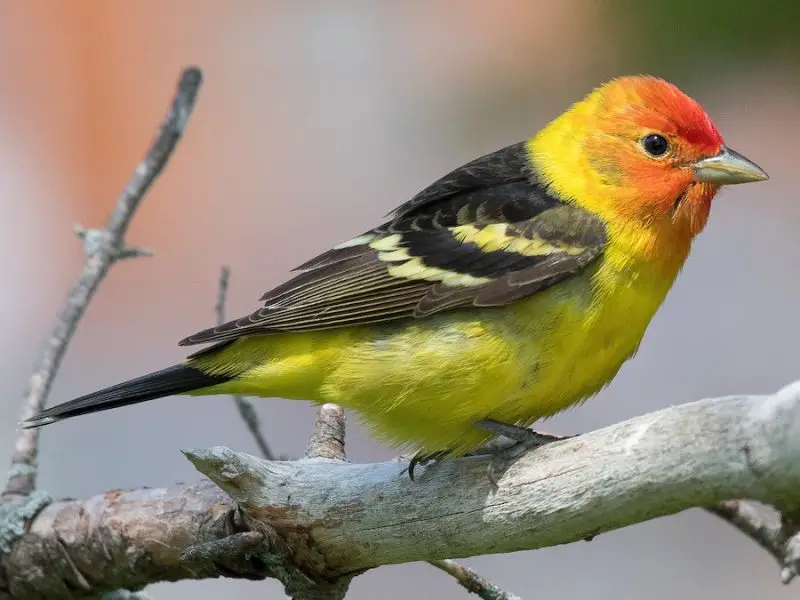
The Western Tanager is a brilliantly colored songbird with a yellow body, black wings, and a red-orange face in males. Females are more subdued with olive-yellow tones and grayish wings. Though they belong to the cardinal family, their appearance often surprises observers who mistake them for tropical birds.
Western Tanagers feed on insects, fruits, and berries, foraging high in coniferous trees and catching prey mid-air. Their song is a series of short, burry phrases reminiscent of a hoarse robin. Despite their vivid colors, they can be difficult to spot due to their preference for dense foliage.
These tanagers breed in montane and coniferous forests across California, particularly in the Sierra Nevada and Cascade ranges. They migrate through the state in spring and fall and may visit fruiting trees and water sources in parks or gardens. Their brief but colorful visits make them a favorite among birdwatchers.
Red-breasted Nuthatch (Sitta canadensis)
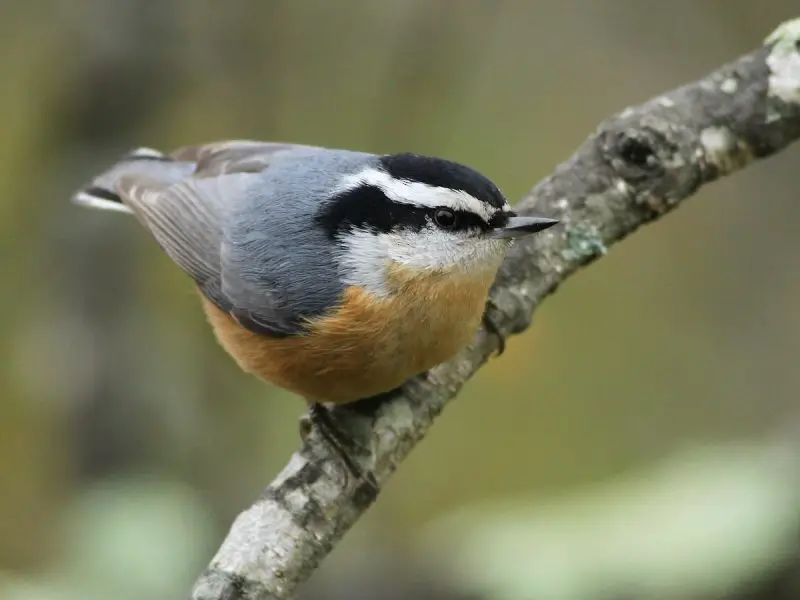
The Red-breasted Nuthatch is a small, compact bird with a blue-gray back, rusty underparts, and a distinctive black eye stripe set against a white face. Its short tail and strong legs make it well-suited for climbing tree trunks and branches. Its nasal, tinny “yank-yank” call is often heard in coniferous woodlands before the bird is seen.
This nuthatch is a specialist climber, moving headfirst down trees as easily as it climbs up. It feeds on insects and seeds, particularly from conifers, and often wedges food into bark crevices to hammer it open. During winter, it may cache food in hidden spots, returning later to retrieve it.
In California, the Red-breasted Nuthatch is found primarily in coniferous forests in the mountains and coastal regions. It is a year-round resident in many areas, though its numbers can fluctuate with cone crop success. It also visits feeders offering suet or sunflower seeds, especially during colder months.
White-breasted Nuthatch (Sitta carolinensis)

The White-breasted Nuthatch is the largest nuthatch in North America, with a white face and underparts, a blue-gray back, and a black or gray cap. It has a sharp, slightly upturned bill and a habit of flicking its tail upward. Its call is a nasal “yank” similar to its red-breasted cousin, but lower in pitch.
This bird feeds on insects, nuts, and seeds, often gleaning food from bark or storing it in tree crevices for later use. It’s frequently seen climbing down tree trunks headfirst and probing under bark with its sturdy bill. Its behavior is both methodical and acrobatic, making it fun to watch.
In California, the White-breasted Nuthatch is widespread in oak woodlands, mixed forests, and suburban areas with mature trees. It is a common year-round resident and readily visits bird feeders, particularly those with suet or shelled peanuts. Its presence is often signaled by its loud, nasal calls.
Northern Flicker (Colaptes auratus)

The Northern Flicker is a large, brownish woodpecker with black barring on the back, a spotted belly, and a black crescent on the chest. In California, the western “Red-shafted” form is common, showing red under the wings and tail and a gray face with a red mustache in males. Its loud “kleer” call and drumming are typical woodpecker sounds.
Unlike most woodpeckers, the Northern Flicker often forages on the ground, digging in soil and leaf litter for ants and beetles. It also feeds on fruits and seeds and will visit feeders for suet. It nests in tree cavities, often returning to the same area each year.
In California, flickers are found year-round in open woodlands, parks, and suburban yards. They prefer areas with scattered trees and grassy clearings. Their unique appearance and ground-foraging behavior set them apart from other woodpeckers in the region.
Golden Eagle (Aquila chrysaetos)
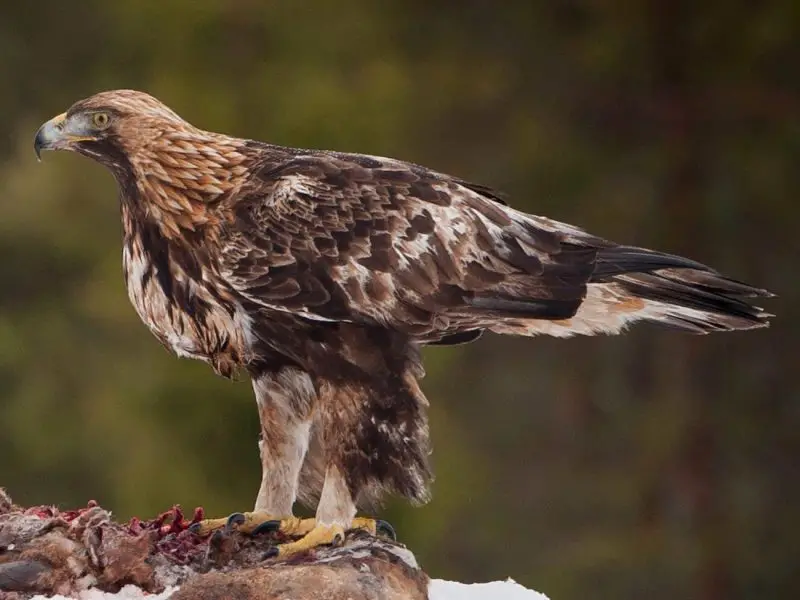
The Golden Eagle is one of the most powerful raptors in North America, with dark brown plumage and golden feathers on the nape. Adults have long, broad wings and a wingspan that can exceed seven feet. They are often seen soaring effortlessly with slightly upturned wings.
These eagles are apex predators, feeding primarily on mammals such as rabbits, ground squirrels, and occasionally larger prey. They use a combination of soaring flight and high-speed dives to catch animals in open terrain. Golden Eagles are solitary or seen in pairs, and they fiercely defend their nesting territories.
In California, Golden Eagles are found in mountainous areas, foothills, and open country, including grasslands and deserts. They are most commonly seen in the eastern Sierra Nevada, the Coast Ranges, and open rangelands. They nest on cliffs or in tall trees and are year-round residents in suitable habitats.
Steller’s Jay (Cyanocitta stelleri)
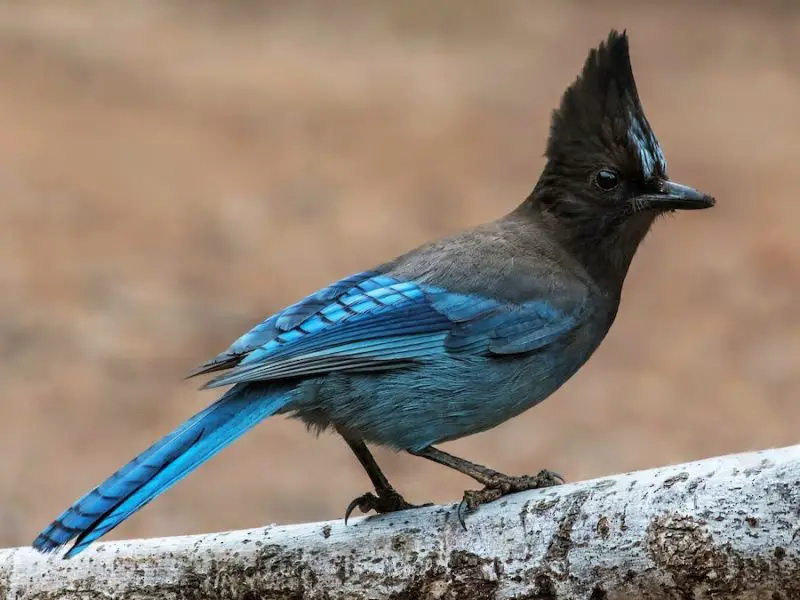
Steller’s Jay is a striking bird with deep blue body feathers, a blackish head, and a tall, expressive crest. Its bold colors and raucous calls make it one of the most recognizable forest birds in the West. The species shows slight regional variations, with birds in California often having a darker crest.
These jays are highly intelligent and social, known for mimicking hawks and other birds. They forage for nuts, seeds, insects, and occasionally nestlings, storing food for later use. Their behavior is bold and curious, often approaching picnic tables and campsites in search of scraps.
In California, Steller’s Jays are common year-round in coniferous and mixed woodlands, particularly in the Sierra Nevada and coastal forests. They are frequent visitors to feeders and can dominate food sources with their assertive presence. Their striking appearance and noisy habits make them a memorable part of the forest bird community.
Acorn Woodpecker (Melanerpes formicivorus)
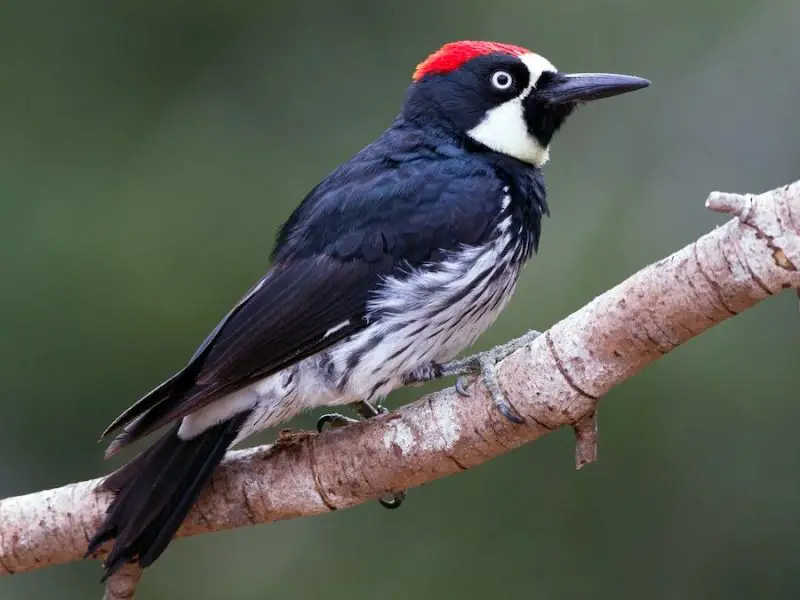
The Acorn Woodpecker is a medium-sized woodpecker with a bold black-and-white face, a red crown, and glossy black plumage. Its white rump and wing patches are visible in flight, and its clown-like facial pattern is distinctive. Males have a full red cap, while females show a black band between the red and white areas.
This species is best known for its habit of storing thousands of acorns in granary trees, where it drills holes into bark or utility poles to stash its food. It lives in cooperative groups that share nesting and food storage duties. These social birds are quite vocal, with a range of chattering calls and squawks.
In California, Acorn Woodpeckers are found year-round in oak woodlands, mixed forests, and even suburban areas with mature trees. They are most abundant in the Coast Ranges and Sierra foothills. Their reliance on oak trees for both food and nesting makes them an integral part of California’s woodland ecosystem.
Black-crowned Night Heron (Nycticorax nycticorax)
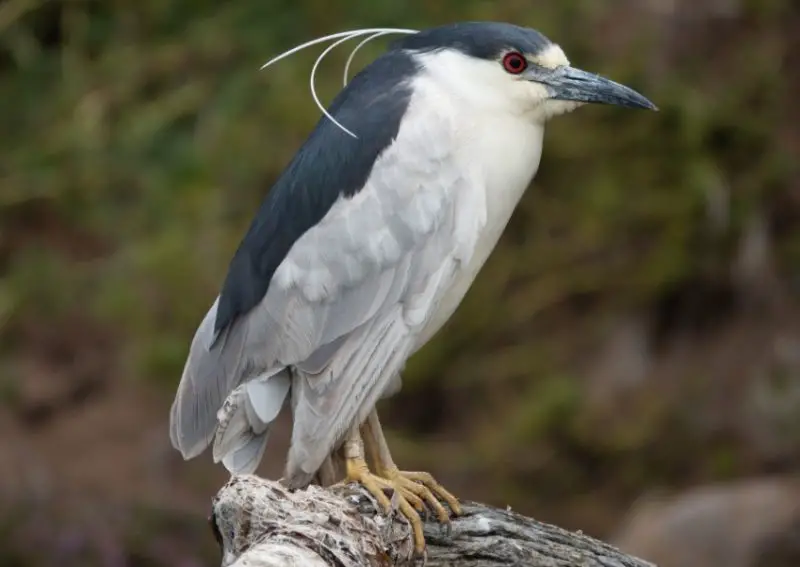
The Black-crowned Night Heron is a stocky wading bird with a black cap and back, gray wings, and white underparts. It has red eyes and short yellow legs, giving it a distinctive profile compared to other long-legged herons. Juveniles are brown and heavily streaked, gradually transitioning into adult plumage over several years.
Unlike many herons, this species is most active at dusk and during the night, feeding on fish, frogs, crustaceans, and insects in shallow wetlands. It waits patiently at the water’s edge before striking quickly. During the day, it roosts in trees or shrubs near water, often in large colonies.
In California, Black-crowned Night Herons are commonly found in wetlands, marshes, ponds, and estuaries throughout the year. They are particularly common in urban parks and coastal wetlands. Their adaptability to human-altered habitats and nocturnal habits help them thrive in a wide range of settings.
Great Egret (Ardea alba)
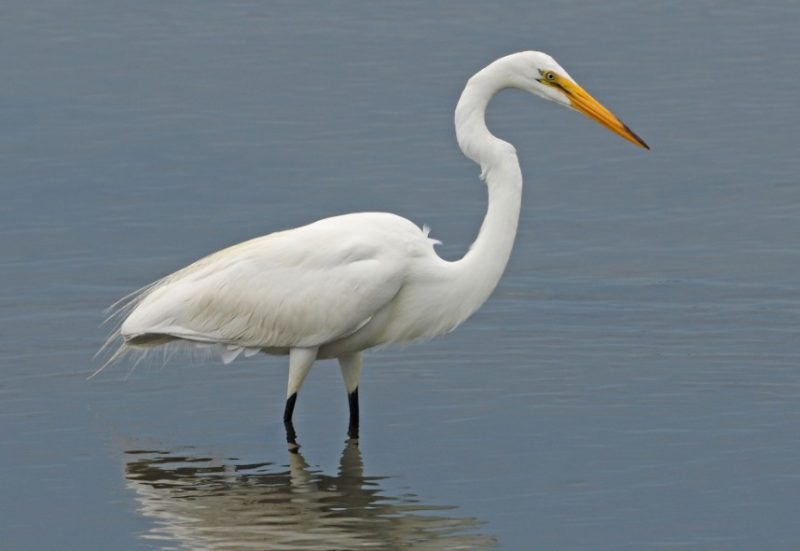
The Great Egret is a large, elegant white heron with long black legs, a yellow bill, and graceful neck and wing movements. During the breeding season, it develops long, wispy plumes on its back and displays striking green lores around the eyes. Its slow, deliberate flight and extended neck make it easy to identify in the field.
This bird feeds in shallow water by stalking or standing motionless, then striking rapidly at fish, amphibians, or insects. It nests in colonies, often with other herons and egrets, building stick nests in trees or shrubs near wetlands. Courtship displays involve plume-shaking and aerial chases.
In California, the Great Egret is a widespread resident and migrant found in freshwater marshes, tidal flats, lakes, and rice fields. It is commonly seen in the Central Valley, coastal estuaries, and along rivers. Conservation efforts have helped its populations rebound after historic declines due to plume hunting.
Western Meadowlark (Sturnella neglecta)

The Western Meadowlark is a medium-sized, chunky songbird with a bright yellow breast marked by a bold black “V.” Its upperparts are mottled brown and gray, offering excellent camouflage in grassy fields. Its flute-like, melodious song is a defining feature of open western landscapes.
This ground-dwelling bird forages for insects and seeds in fields, prairies, and pastures. It nests on the ground, hidden in grass, and often sings from fence posts or low shrubs. Despite its striking appearance, it can be surprisingly hard to spot when not singing due to its excellent camouflage.
In California, the Western Meadowlark is a year-round resident in grasslands, agricultural fields, and open plains. It is especially common in the Central Valley and eastern foothills. Its song and bright colors make it a familiar and beloved symbol of rural California.
American Wigeon (Mareca americana)
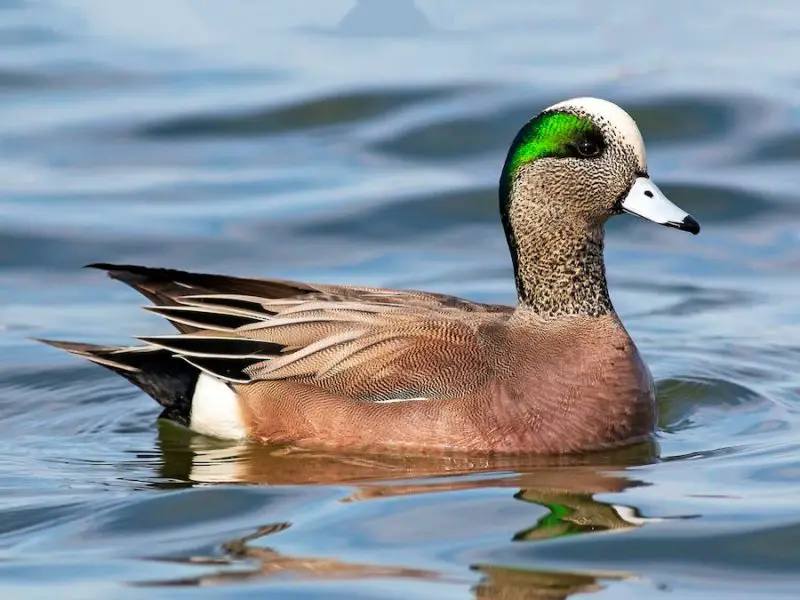
The American Wigeon is a compact dabbling duck with a round head and short bill. Males are distinctive with a white crown, green ear patch, and pinkish sides, while females are mottled brown with a subtle bluish bill. In flight, both sexes show a white wing patch that flashes against darker wings.
This species is highly vocal, with males producing a high-pitched whistling call that gives them the nickname “baldpate.” They graze on aquatic vegetation and grasses, often stealing food from diving ducks. During migration and winter, they gather in large flocks in wetlands and agricultural fields.
In California, American Wigeons are common winter visitors, especially in the Central Valley, coastal marshes, and inland lakes. They arrive in fall and depart by spring, using California’s rich wetland habitats to rest and feed during migration. Some individuals may linger year-round in favorable areas.
Scaly-breasted Munia (Lonchura punctulata)
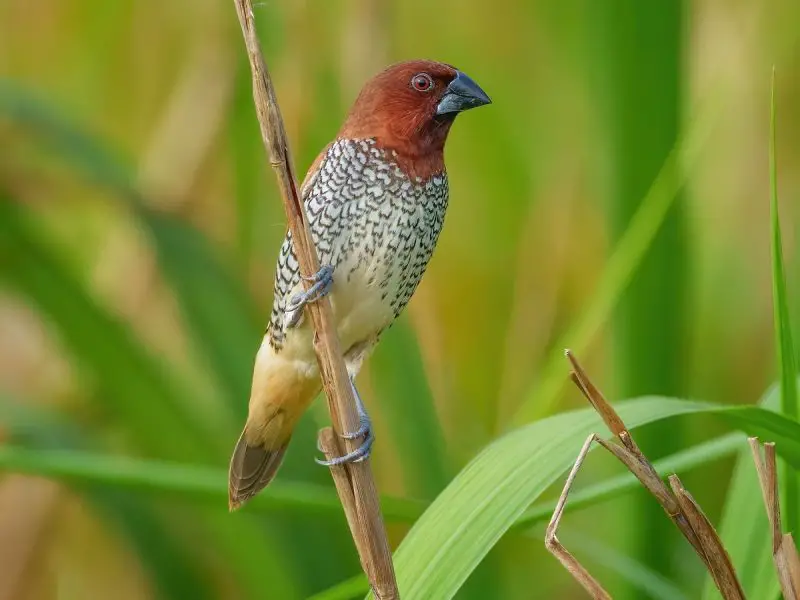
The Scaly-breasted Munia, also known as the Nutmeg Mannikin, is a small finch-like bird with a brown upper body and white underparts marked with dark scale-like patterns. It has a conical bill and a short tail, giving it a compact appearance. Despite being non-native, it has become established in parts of California.
Originally from Asia, this species was introduced to the United States through the pet trade and now thrives in Southern California, particularly in urban parks, botanical gardens, and grassy areas. It feeds mainly on grass seeds and small grains, foraging in flocks on the ground or low vegetation.
In California, the Scaly-breasted Munia is now a regular resident in the Los Angeles area and parts of Orange and San Diego counties. Its quiet calls and flocking behavior make it relatively easy to observe once you recognize its subtle plumage. It typically nests in thick shrubs or tall grasses.
European Starling (Sturnus vulgaris)
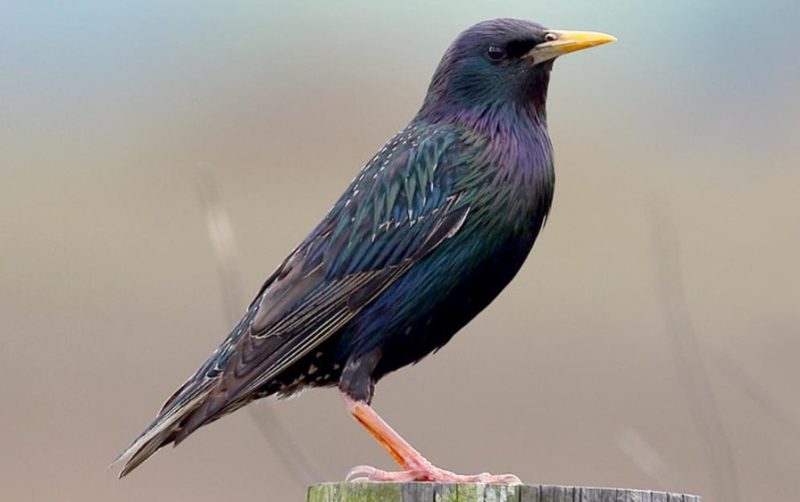
The European Starling is a medium-sized, iridescent black bird with speckles and a short tail. Its plumage shines with green and purple hues in the sunlight. In the winter, its feathers become more spotted, and its bill changes from yellow in breeding season to dark in nonbreeding months.
Highly adaptable and aggressive, European Starlings often outcompete native birds for nesting cavities. They are noisy, social, and form large flocks called murmurations that twist and turn in synchronized flight. Their vocalizations are varied and include mimicry of other birds.
In California, starlings are widespread in urban, suburban, and agricultural areas. They are common year-round residents in cities, parks, farmlands, and orchards. Though considered invasive, they are a familiar sight perched on wires, rooftops, or foraging on open lawns.
House Sparrow (Passer domesticus)
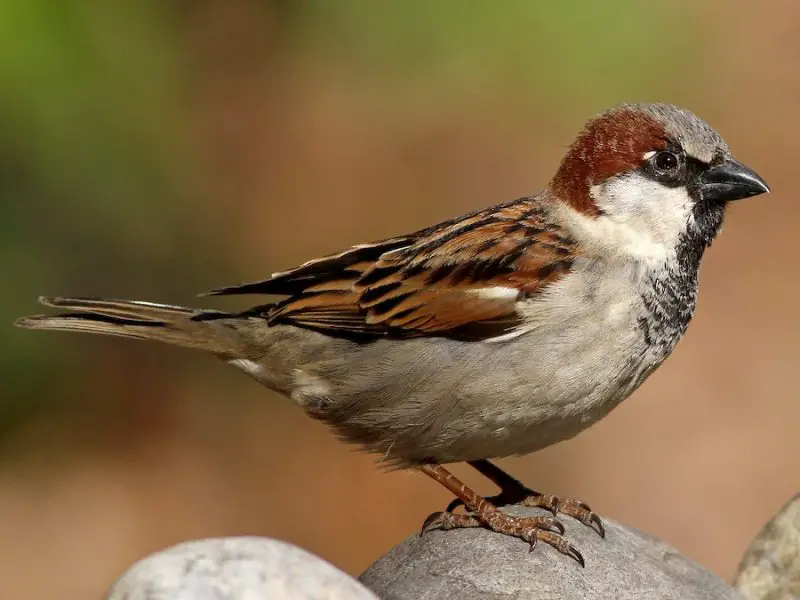
The House Sparrow is a small, chunky songbird with a stout bill. Males have gray heads, black bibs, and chestnut-colored necks, while females are plainer with brown streaked backs and pale underparts. They are closely associated with human environments.
Originally from Europe, House Sparrows were introduced to North America in the 19th century and quickly spread across the continent. They thrive around buildings and feed on grains, seeds, and scraps. Their chirping calls and bustling presence are common in public spaces and around homes.
In California, House Sparrows are ubiquitous in cities and towns, particularly around restaurants, grocery stores, and farms. They nest in eaves, vents, and any crevice they can find. Despite being non-native, they are one of the most familiar birds in urban California.
Red-tailed Hawk (Buteo jamaicensis)
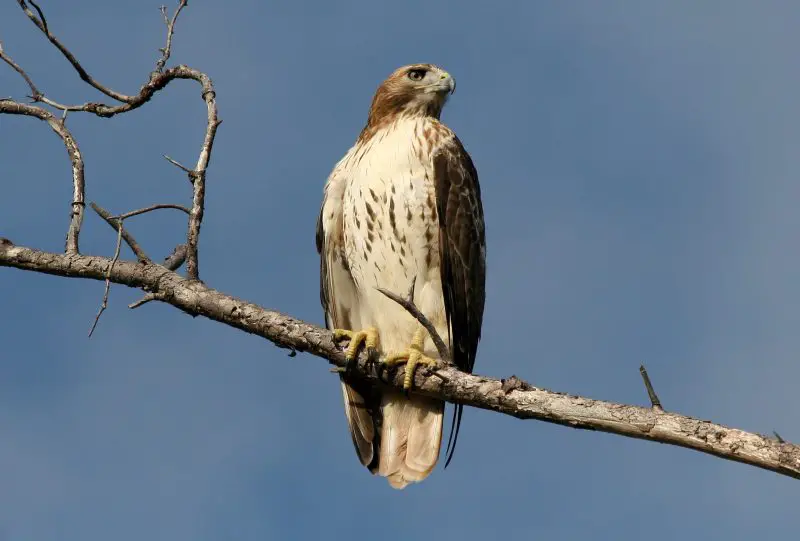
The Red-tailed Hawk is one of the most common and widespread raptors in California. It has broad wings, a pale underside with a streaked belly band, and a rich rufous tail that gives it its name. Juveniles lack the red tail and are more heavily mottled overall.
These hawks are powerful predators that soar on thermals or perch high while scanning for prey. They feed on small mammals, reptiles, and birds. Their distinctive, raspy scream is often used in movies to represent any bird of prey. Red-tailed Hawks are monogamous and often reuse the same large nest year after year.
In California, Red-tailed Hawks are found in almost every habitat, including deserts, forests, grasslands, and urban areas. They are year-round residents and are often seen along highways, circling above open fields, or perched on utility poles and trees.
Bushtit (Psaltriparus minimus)

The Bushtit is a tiny, energetic songbird with soft gray-brown plumage, a rounded body, and a short tail. Its small, stubby bill and pale eye (in females) help distinguish it from similar species. Despite its muted coloring, its constant movement in flocks draws attention in the treetops.
This bird is highly social and typically travels in groups of 10 to 40 individuals. They chatter as they forage, hanging upside down and probing leaves and branches for insects, spiders, and other small invertebrates. Bushtits often move rapidly through brush and low trees, especially in mixed flocks with chickadees and warblers.
In California, Bushtits are year-round residents in a wide range of habitats, including oak woodlands, chaparral, suburban yards, and parks. They build elaborate hanging nests made from spider webs and plant fibers, often tucked deep within shrubs. Their presence is more often heard than seen due to their constant, high-pitched calls.
Yellow Warbler (Setophaga petechia)
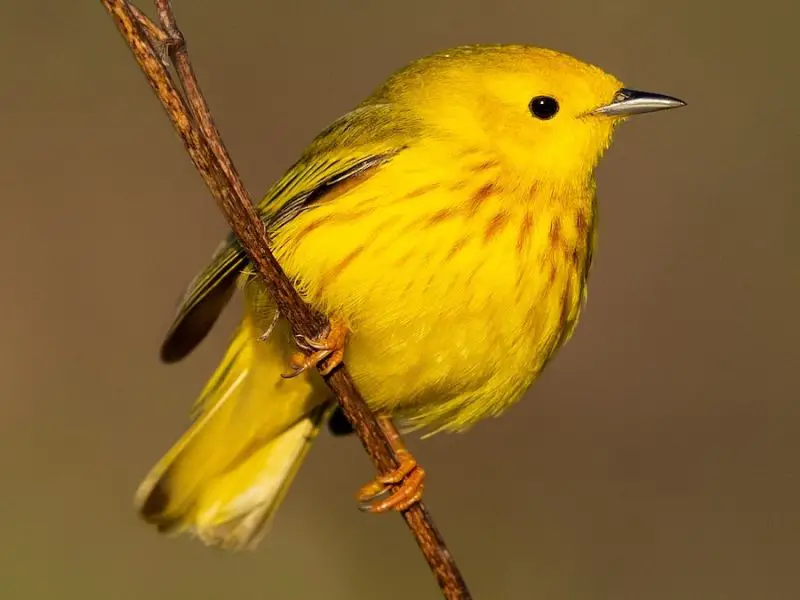
The Yellow Warbler is a strikingly bright yellow bird with olive upperparts and fine reddish streaks on its breast in males. It has a round head, black beady eyes, and a sweet, whistled song that’s often heard during spring and summer.
This warbler is migratory, arriving in California in spring to breed and departing in late summer or early fall. It feeds on insects and larvae, often gleaning them from leaves or catching them mid-air. During breeding, males are highly vocal, using their song to establish territory and attract mates.
In California, Yellow Warblers are commonly found in riparian woodlands, willow thickets, and wet meadows, particularly in the Central Valley and along coastal regions. Their presence signals healthy vegetation, and they are sensitive to habitat destruction, especially from agriculture and development.
Black Phoebe (Sayornis nigricans)
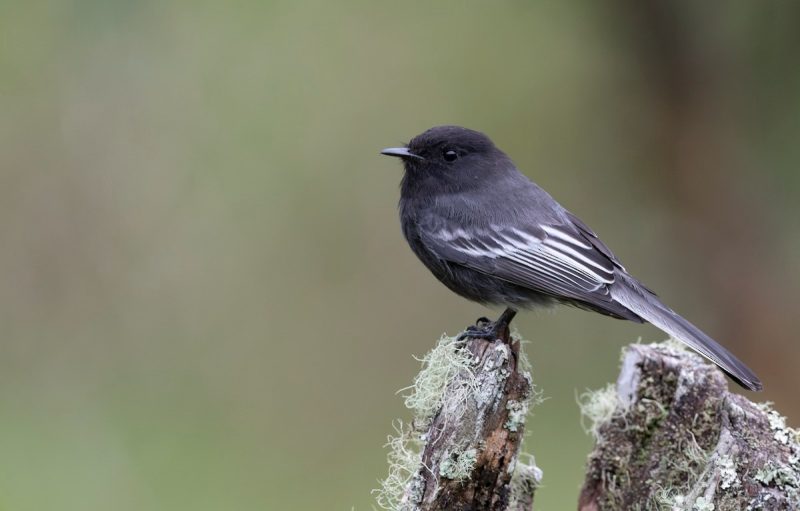
The Black Phoebe is a small flycatcher with a sooty-black head and body, sharply contrasted by a white belly and undertail. It has a thin bill and a habit of wagging its tail up and down when perched, making it easy to identify.
This species is almost always found near water, including creeks, ponds, fountains, and even drainage ditches in urban areas. Black Phoebes are sit-and-wait predators that catch flying insects in mid-air. They often perch on low branches or fences, scanning for movement before launching into quick flights.
Black Phoebes are year-round residents throughout much of California, especially in coastal and lowland regions. They build mud-cup nests under bridges, eaves, and cliff ledges. Their distinctive “tsip” call and tail-wagging behavior make them familiar and endearing to many birdwatchers.
California Gull (Larus californicus)

The California Gull is a medium-sized gull with a white head and body, gray wings, yellow legs, and a yellow bill marked with a black ring near the tip. In nonbreeding plumage, its head appears more streaked, giving it a slightly scruffy look.
Unlike many gulls that are strictly coastal, the California Gull also breeds inland, particularly around large lakes and reservoirs. It feeds opportunistically on fish, insects, garbage, and even agricultural crops. It is known for its long migrations between breeding and wintering grounds.
In California, this gull is a familiar sight along beaches, harbors, lakes, and parking lots. Its adaptability has helped it thrive in both natural and urban settings. Large colonies nest on islands in Mono Lake and the Great Salt Lake, and many winter along the coast or in the Central Valley.
Purple Finch (Haemorhous purpureus)
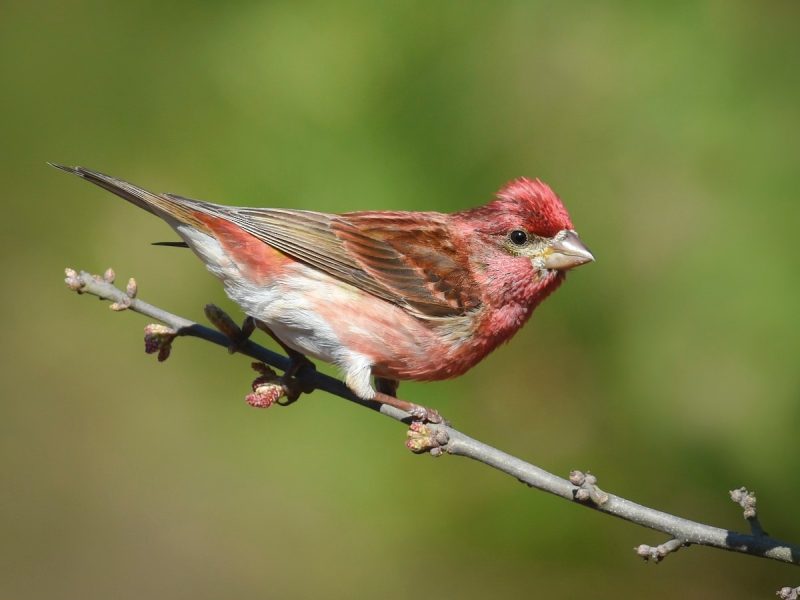
The Purple Finch is a chunky songbird with a slightly notched tail and a stout, conical bill. Males are adorned in a rosy-red wash that extends from the head and chest to the back and flanks, while females are brown and white with bold facial markings.
Purple Finches feed on seeds, buds, berries, and insects, often visiting feeders for sunflower seeds. Their musical warbling song and rich color make them a favorite among bird enthusiasts. Males sing from high perches to defend their territory and attract mates during the breeding season.
In California, Purple Finches are found mostly in forested regions, especially in the Sierra Nevada and coastal ranges. They are present year-round in some areas but migrate to lower elevations or southern parts of the state in winter. They favor coniferous and mixed woodlands and are more secretive than House Finches.
Western Kingbird (Tyrannus verticalis)
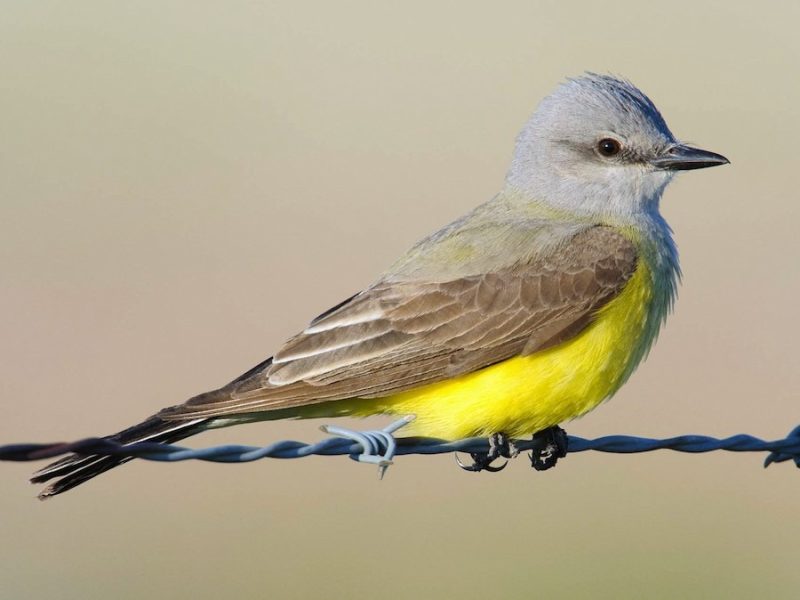
The Western Kingbird is a medium-sized flycatcher with a gray head and chest, bright yellow belly, and white outer tail feathers that flash during flight. It has a slender bill and strong legs suited for perching and catching insects on the wing. Its call is a sharp, repeated “kip” or “kip-kip.”
This bird is a summer visitor to California, arriving in spring to breed in open habitats such as grasslands, deserts, and agricultural areas. Western Kingbirds are aggressive defenders of their nesting territories, often chasing away larger birds. They feed primarily on flying insects, capturing them in midair from perches.
In California, they are common in the Central Valley and southern deserts, often seen perched on fence posts or wires scanning for prey. Their aerial agility and bold behavior make them popular among birdwatchers during the breeding season. They typically build nests in trees or shrubs.
Bewick’s Wren (Thryomanes bewickii)
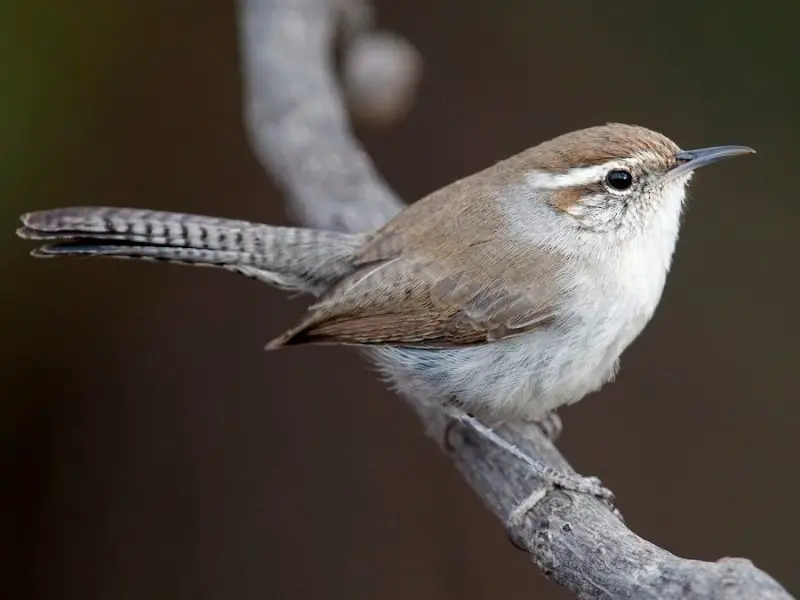
Bewick’s Wren is a small, slender songbird with a long, slightly curved bill and distinctive white eyebrow stripe contrasting with its brown back and barred tail. Its underparts are pale with fine streaking. Known for its loud, melodious, and complex song, it is one of California’s most recognizable wrens.
This species prefers dry, shrubby habitats such as chaparral, oak woodlands, and suburban gardens. It is often seen hopping along fence lines or exploring underbrush in search of insects and spiders. Bewick’s Wrens are territorial, with males singing to defend their area and attract mates.
Bewick’s Wrens are common throughout much of California year-round. They nest in cavities, rock crevices, or old nests of other birds. Their adaptability to suburban environments has helped maintain stable populations despite habitat changes in some wild areas.
Lesser Goldfinch (Spinus psaltria)

The Lesser Goldfinch is a small, active finch with a short, conical bill and a bright yellow underside contrasted by a black or dark green back depending on the region. Males often show a glossy black cap and wings, while females are duller with olive backs.
It is one of the most widespread and abundant finches in California, found in open woodlands, suburban areas, and along riparian corridors. Lesser Goldfinches feed primarily on seeds, especially from thistles, sunflowers, and grasses, often visiting backyard feeders.
In California, they are year-round residents, common in the Central Valley and foothills of the Sierra Nevada. Their cheerful, twittering songs and social nature, often forming small flocks, make them a favorite among bird lovers. They nest in shrubs or trees, weaving loose cup-shaped nests.
Northern Harrier (Circus hudsonius)
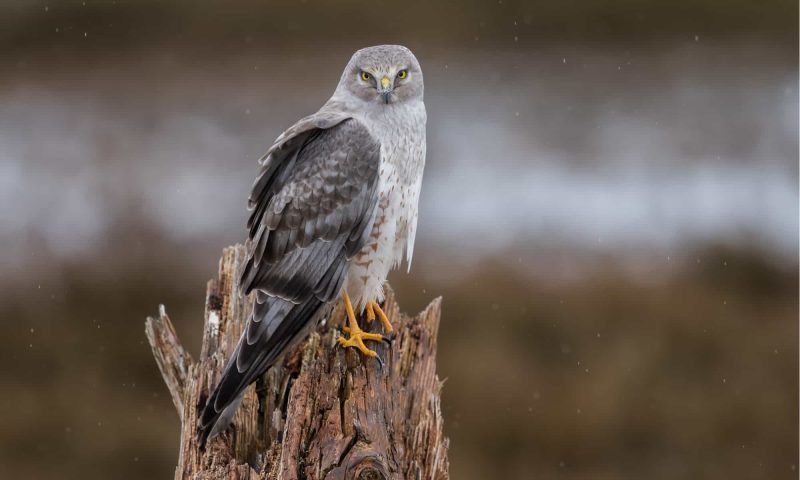
The Northern Harrier is a medium-sized raptor with long wings and a distinctive owl-like facial disk that helps it detect prey by sound. Males have gray upperparts and white underparts, while females and juveniles are brownish with streaking. They are known for flying low over marshes and grasslands.
This hawk hunts by gliding slowly over open fields and wetlands, scanning for small mammals, birds, and amphibians. Northern Harriers use their keen hearing and vision to locate prey hidden in tall vegetation. Their graceful flight, with wings held in a shallow “V,” is a characteristic sight in their habitat.
In California, Northern Harriers breed in marshes, grasslands, and agricultural areas, particularly in the Central Valley. Many migrate south in winter, but some remain year-round in suitable habitats. They nest on the ground concealed in dense vegetation and are protected under various wildlife laws.
Great Horned Owl (Bubo virginianus)
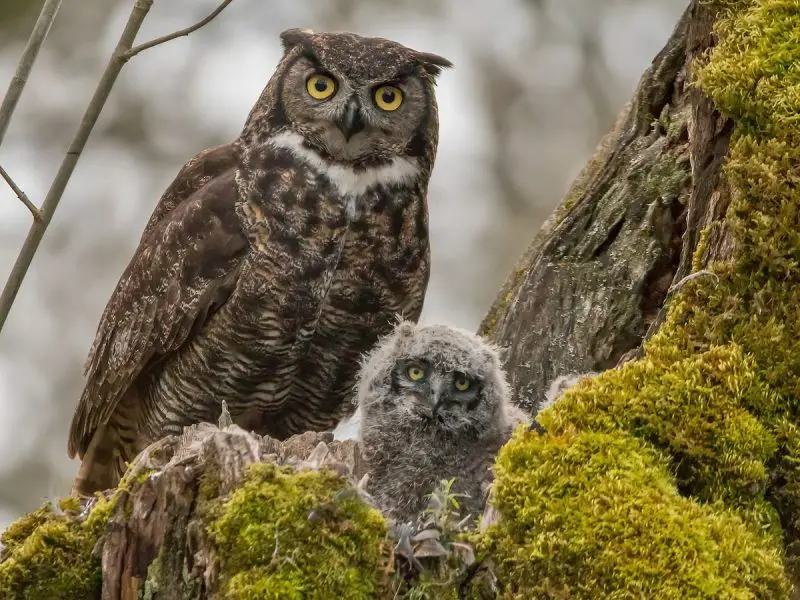
The Great Horned Owl is one of the most widespread and powerful owls in North America, easily recognized by its large size, ear tufts (which look like horns), and yellow eyes. Its mottled gray-brown plumage provides excellent camouflage against tree bark and rocky cliffs.
This nocturnal predator hunts a wide variety of prey, including mammals, birds, reptiles, and insects. It uses silent flight and acute hearing to surprise prey at night. Great Horned Owls are territorial and can be aggressive in defending their nests or young.
In California, they inhabit diverse environments from dense forests and deserts to suburban parks. They often reuse nests built by other large birds, such as hawks or crows. Their deep, booming hoots echo through the night, making them one of the most iconic sounds of the wilderness.

